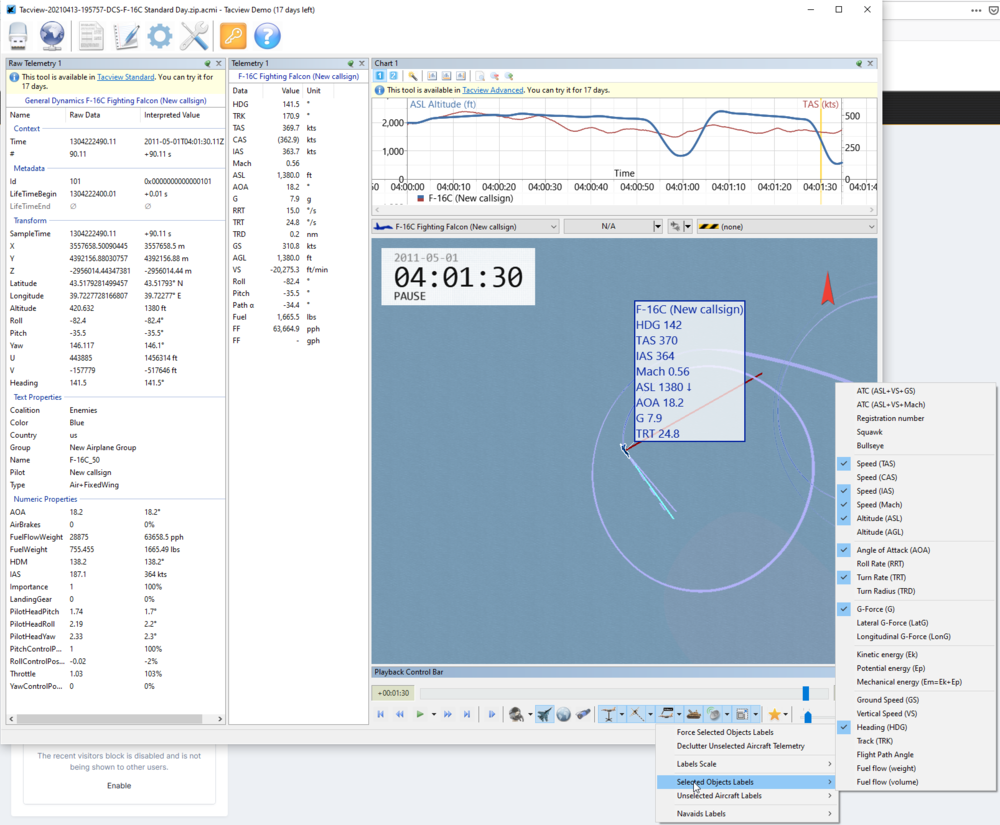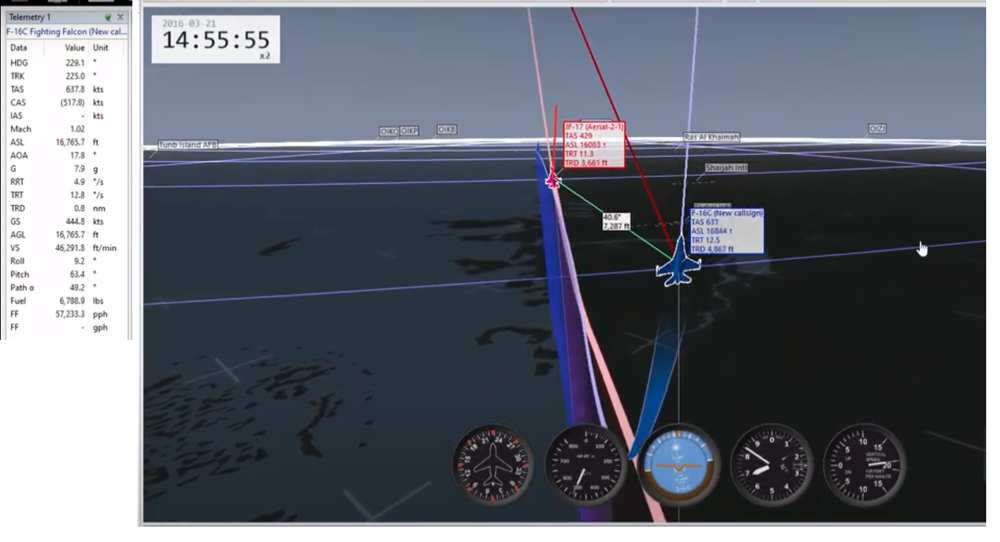

oldtimesake
-
Posts
123 -
Joined
-
Last visited
Content Type
Profiles
Forums
Events
Everything posted by oldtimesake
-
Hi, Xavven. I discussed with you the other day. I found it interesting to measure the ps loss. However, our current method takes lots of efforts.
I was a flight control engineer, and I know aerodynamics and flight dynamics. I know a simple way to measure ps loss.
However I don'y have DCS installed on my current machine, so I would like to ask you some questions about Tacview:
1) Is it possible to read the acceleration of aircraft (how fast/slow it's gaining speed/losing speed)?
2) Is it possible to read the thrust and drag in real time?
-

Hi, oldtimesake! I only recently got Tacview so I'm not very well versed in it, and it's still in its trial period on my computer. It doesn't look like it has acceleration, thrust, or drag recorded anywhere, unfortunately. I thought I'd include a screenshot with every window open I can find. That appears to be all it offers.
-

That's it! I saw "longitudinal G-force" and that is the acceleration!
In a tight turn, just tell me the aircraft weight, the true air speed, the lateral G-force, and the longitudinal G-force, I can calculate the corresponding ps loss and compare it with the manual.
We can start with a turn near 22.5 deg/sec between Mach 0.6-0.7, just like the one we discussed.
-





